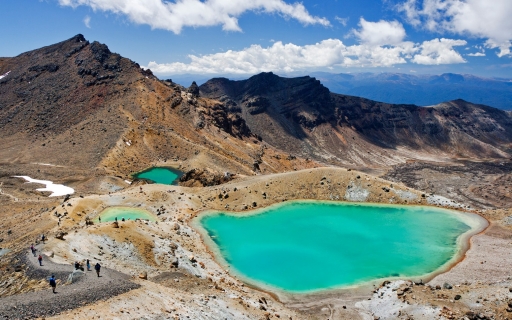Hokitika Weather and Climate: A Comprehensive Guide
The weather in Hokitika sees moderate temperature fluctuations over the course of a year.
Temperatures can be pleasant at the high end
to roughly cold at the low end.
It is also known for its large amounts of rainfall.
Let’s explore the climate details in depth to provide you with a complete overview.
Average maximum day and minimum night temperature
In Hokitika, seasonal changes bring about a moderate variation in temperatures. Typically, average maximum daytime temperatures range from a pleasant 20°C in February to a chilly 12°C in the coolest month, July.
Nights are cooler, with lows often dropping to around 5°C during the colder months. Check out our detailed temperature page for more information.Temperature ranges by month
Precipitation and rainy days
Hokitika experiences significant rainfall throughout the year, averaging 3373 mm of precipitation annually. Precipitation levels in Hokitika remain relatively steady throughout the year. December has the most rain, with 345 mm over 19 days. In July, this drops slightly to 222 mm, making the city's climate fairly predictable.The mean monthly precipitation over the year, including rain, hail and snow
Sunshine over the year
For those who appreciate different seasons, Hokitika serves as an ideal destination. Expect longer, more sun-filled days in January with an average of 7.0 hours of sunshine daily, and embrace the darker days in June, offering only 3.6 hours of daily sunlight. Visit our detailed sunshine hours page for more information.Monthly hours of sunshine
Daily hours of sunshine
Average water temperature
The mean water temperature over the year ranges from 12°C in July to 16°C in February.
Water temperature over the year
Average humidity
The city experiences its highest humidity in February, reaching 84%. In August, the humidity drops to its lowest level at 81%. What does this mean? Read our detailed page on humidity levels for further details.
Relative humidity over the year
Average wind speed
The average wind speed over the year ranges from 2 m/s to 3 m/s. It is lower in February, March, April, May, June and July and higher in January, August, September, October, November and December.
The mean monthly wind speed over the year (meters per second)
almost clear and no rain almost clear and no rain partly cloudy and no rainForecast for Hokitika
Select a Month of Interest
Check the conditions for any month of the year.
The best time of year to visit Hokitika in New Zealand
The average rainfall figures in Hokitika are quite high. Throughout the year, you have a chance of prolonged precipitation. So no matter what time of year you go, you will always have to deal with a high number of rainy days. This makes it more challenging to point out the best time of year to visit. If we needed to pick one month we would choose January which is the sunniest month of the year.Other facts from our historical weather data:
February has an average maximum temperature of 20°C and is the warmest month of the year.
The coldest month is July with an average maximum temperature of 12°C.
December tops the wettest month list with 345 mm of rainfall.
July is the driest month with 222 mm of precipitation.
January is the sunniest month with an average of 211 hours of sunshine.
No idea where to travel to this year? We have a tool that recommends destinations based on your ideal conditions. Find out where to go with our weather planner.




